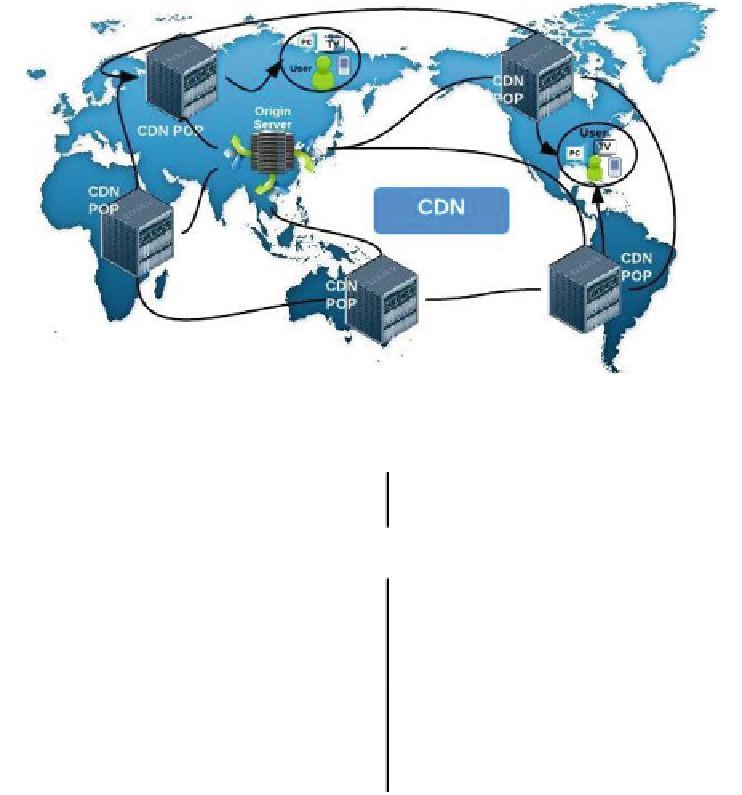Database Reference
In-Depth Information
Fig. 1. The architecture of a Content Delivery network
Table 1. CDN Request Redirecting mechanisms
Global Server Load Balancing
Global awareness
Smart authoritative DNS
DNS-based request routing
HTTP redirection
URL rewriting
URL modication
Automation through scripts
Anycasting
IP anycast
Application level anycast
CDN Peering
Centralized directory model
Distributed Hash Table
Flooded request model
Document routing model
for the next probable requirement; as it might be possible that the same/other user(s)
in the region will require the content. Prefetching [
2
] is another important func-
tionality provided by the POP server where it fetches the content that clients may be
interested in from the origin server thereby reducing the chance of traf
c congestion
especially during the high demand. Needless to say, prefetching needs to predict the
users
preferential contents by synthesizing and analysing the historical information
such as access logs. It is evident that this kind of prefetching techniques may require
statistical data mining algorithms to determine what content to prefetch.
3. Request Redirecting mechanism: One of the functions of a CDN is to dynamically
redirect clients to the most optimal servers based on several QoS parameters such as
server load, latency, network congestion, client access networks, and proximity etc.
There are a variety of methods that can be used to implement this mechanism as
presented in Table
1
[
3
].
'














Search WWH ::

Custom Search